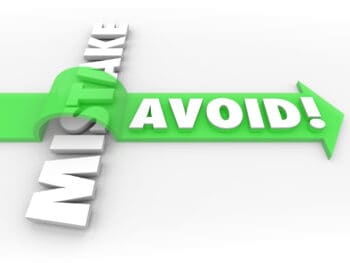Big data. Predictive analytics. Very sophisticated modeling to predict claims outcomes versus a paper and a pen. I’m Michael Stack with Amaxx and today I’m going to be telling you how to guarantee better claim outcomes without spending any additional money and only maybe about 20 to 30 minutes of additional work on your claim.
Click Link to Access Free PDF Download
“13 Research Studies to Prove Value of Return-to-Work Program & Gain Stakeholder Buy-In”
Now, don’t get me wrong. Big data, predictive analytics, sophisticated claims modeling to predict claims outcomes, incredibly valuable tool and resource that the companies are specializing in this information and then bringing it to the market place give for our industry. But for your employee, Tom Smith, who gets injured today, you’re going to have the most impact and guarantee a better outcome for Tom’s claim with a paper and a pen.
Look at Your Last 5 First Report of Injury
Let me tell you what I mean. What I want you to do is pull out your last five first-reports of injury. Go ahead and pull those out and take a look at them. How well are they completed? How well are they, on a scale from one to ten? What would you get it? Would you give it a one, would you give it three, would you give it a five, would you give it a ten? I’m going to bet that there’s room for improvement in the completion of your first reports of injury. Here’s what I want you to do, is that I want you to realize that how well that first report of injury is completed is a huge determining factor in how well that claim is going to go. I want you to step up your game in the completion of those first reports of injury because it’s going to guarantee for Tom’s claim, who gets injured today, a better outcome for Tom and thereby a better outcome for you in reduced worker’s comp cost.
4 Points To Properly Execute
When you’re taking a look at these first reports, here’s the information that I want you to look at and see if you can have room for improvement here. First point is who’s responsible for completing these? Is it Jane, Jane the low-level employee and Jane just whips through this in three minutes and says, “I don’t know, that was Tom and he fell off a ladder,” and check-check-check and leaves a whole bunch of blank information? Or, is it a highly responsible accountable person, is it you that’s completing this, or is it you that’s holding that person accountable for getting all the information that you need?
Step number two is, is all the basic information right? Do you have the name right, do you have the social security right, do you have the average weekly wage correct, do you have the date of injury correct? This happens so often it is criminal that this basic information is wrong and the amount of litigation a problem that it causes in a claim just because you didn’t get this right, is incredible.
Number three is I want you to look at the mechanism of injury. Do you have information about the mechanism of injury or is it just written, “Tom fell of a ladder and hurt his low back”. Sorry, that’s not really going to help me very much. That’s not going to cut it in the investigation of a claim. The mechanism of injury, was Tom lifting, was he pulling, was he twisting? Was he carrying paint buckets when he was going up that ladder? Was it against the roof, was it against the siding? Was it a big ladder, was it a small ladder? What was it that caused that injury? What was that mechanism of injury? What are those details surrounding that?
FREE DOWNLOAD: “13 Research Studies to Prove Value of Return-to-Work Program & Gain Stakeholder Buy-In”
Finally, what is the context of the injury. Again, painting that picture of what actually happened. Was Tom inside, was he outside? Was he in the warehouse? Was he lifting up and putting something in the third shelf or was he lifting up and putting it up on the second shelf? What happened? What is that picture making that very crystal clear for what actually happened on that claim? Without good information we can’t make a good decision and the processing of big data, without good data going in you’re not going to get good data going out. Spend that extra 15, 20, even 30 minutes on Tom’s injury, detailing this out, take a look at your first reports of injury, step up our game in getting information ready and you will guarantee yourself better worker’s comp claim outcomes.
Learn More About Reducing Workers’ Comp Costs
Again, I’m Michael Stack with Amaxx and if you’re watching this video somewhere other than reduceyourworkerscomp.com, go ahead and go to that website, sign up for a lot more free information on how to control your worker’s comp costs. To take it one step further, you can go to workers compclub.com/livestreamtraining and sign up for my next live stream training. Again, I’m Michael Stack with Amaxx, remember your success in worker’s compensation is defined by your integrity, so be great!
For additional information on workers’ compensation cost containment best practices, register as a guest for our next live stream training.
Author Michael Stack, Principal, COMPClub, Amaxx LLC. He is an expert in workers compensation cost containment systems and helps employers reduce their work comp costs by 20% to 50%. He works as a consultant to large and mid-market clients, is co-author of Your Ultimate Guide To Mastering Workers Comp Costs, a comprehensive step-by-step manual of cost containment strategies based on hands-on field experience, and is founder of COMPClub, an exclusive member training program on workers compensation cost containment best practices.
Contact: mstack@reduceyourworkerscomp.com.
Workers’ Comp Roundup Blog: https://blog.reduceyourworkerscomp.com/
Live Stream WC Training: http://workerscompclub.com/livestreamtraining
©2017 Amaxx LLC. All rights reserved under International Copyright Law.
Do not use this information without independent verification. All state laws vary. You should consult with your insurance broker, attorney, or qualified professional.
FREE DOWNLOAD: “13 Research Studies to Prove Value of Return-to-Work Program & Gain Stakeholder Buy-In”










